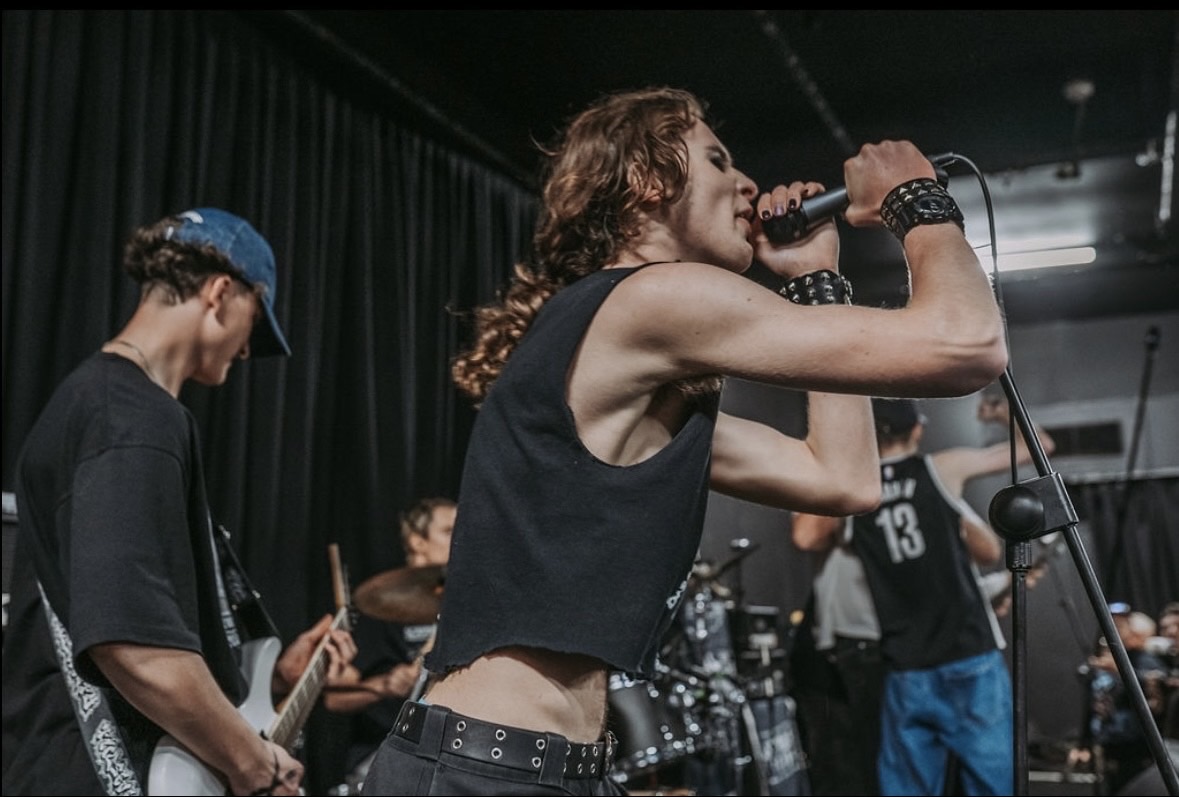Ukrainian journalist Alisa Sapova and British photographer Anastasia Taylor-Lind knew instantly that they would be friends.
“Our creative kinship happened by chance, really”, Taylor-Lind says. “It’s a beautiful gift to meet someone who shares the same values when it comes to reporting.”
Speaking to the pair on a chilly May morning at the Sydney Writer’s Festival about their ongoing photojournalist project 5km From the Frontline, it is clear this creative kinship has only strengthened since their chance meeting 10 years ago in Eastern Ukraine.
Despite only having arrived in Australia the night before, both Sapova and Taylor-Lind are full of energy, finishing each other’s sentences and laughing over some of the wild memories they have shared during their time reporting together.
They began their social media project 5km From the Frontline in 2018 when documenting human rights violations in Ukraine for the International Bar Association.
Each day, they published a photograph and a short piece of text on Instagram. These posts countered conventional media portrayals of war. Instead of the clichés of weapons, explosions and human remains, the posts showcased family picnics, mothers swaddling laughing babies and children playing on swing sets.
Most of these early stories came from the town of Avdiivka, where the pair spent several months listening to local families. During this time, Ukraine had been branded the “forgotten war”. The active conflict that began in 2014 had largely come to an end by 2016.
The mainstream media had effectively moved on. But Sapova and Taylor-Lind chose to stay.
“We like getting to know people and working slowly,” Taylor-Lind says.
They say this style of work was a reaction against the fast-paced and sensationalised news cycle, which presented a number of ethical problems.
“When you’re a journalist, it’s easy to make people feel like they’re animals in a zoo. It’s important for them to know that you actually care about what they are experiencing,” Sapova says.
The pair maintain contact with most of the people they have worked with over the years. Sapova says its “like an extended family”.
Rodion is a member of this “extended family”. He lives in Optyne, a small suburb of Donetsk in Ukraine. When the area was attacked in 2015, most of the locals were forced to evacuate.

But Rodion stayed behind to care for almost 30 people who could not physically leave the suburb due to poor health or old age.
“Rodion found himself in this extraordinary circumstance and decided to sacrifice his whole life for this community,” Taylor-Lind says.
Overnight, he became the single connection between Optyne and the outside world. He would bring medicine and food into the suburb despite the many kilometres of land mines that contaminated the area.
The suburb fell to the Russians in 2022 yet Rodion continues to act as the community’s guardian.
“He is an unsung hero,” Taylor-Lind says. “He gets no glory.”
Sapova, who also studies anthropology, says that many civilian ‘heroes’ like Rodion are overlooked in the media because of gender stereotypes around war.
“We often fall into a trap where we only see women in war who are suffering, while men are only viewed as active combatants,” she says.
“But with 5km From the Frontline, we challenge this stereotype,” Taylor-Lind adds. “We tell real stories about civilians like Rodion doing incredibly brave, heroic things simply because they find themselves in these circumstances.”
Sapova and Taylor-Lind will return to Ukraine later this year to continue their project. As Russia’s 2022 full-scale invasion of Ukraine continues without an end in sight, the conflict is fading into the background of the news cycle.
“I’m filled with uncertainty and self-doubt,” Taylor-Lind says. “Our work is far from finished. To know that I don’t have to do it alone makes it easier.”
Asked if they had any advice for student journalists, they agreed that finding a unique angle on a story is always important.
“Don’t chase the same story as everyone else,” Taylor-Lind says. “There’s always more to discover away from the crowds.”
It was this advice that led to the creation of the pair’s favourite post.

In 2019, millions of displaced civilians were forced to cross the border between Ukraine and Russian-occupied zones. War correspondents from around the world flocked to these checkpoints, hoping to snap the usual front-page photographs of human suffering and despair.
Sapova and Taylor-Lind left the checkpoints without taking a single photo. Like always, they wanted to find a story that wasn’t getting much media attention. At a nearby bus stop, they stumbled upon a man and woman embracing.
This post, they agree, is a beautiful moment of reconciliation that serves as a small beacon of hope within the seemingly endless cycle of fighting.
“So, my advice to young journalists is to simply relax and look around,” Sapova advises. “There will always be something interesting or beautiful to find.”















